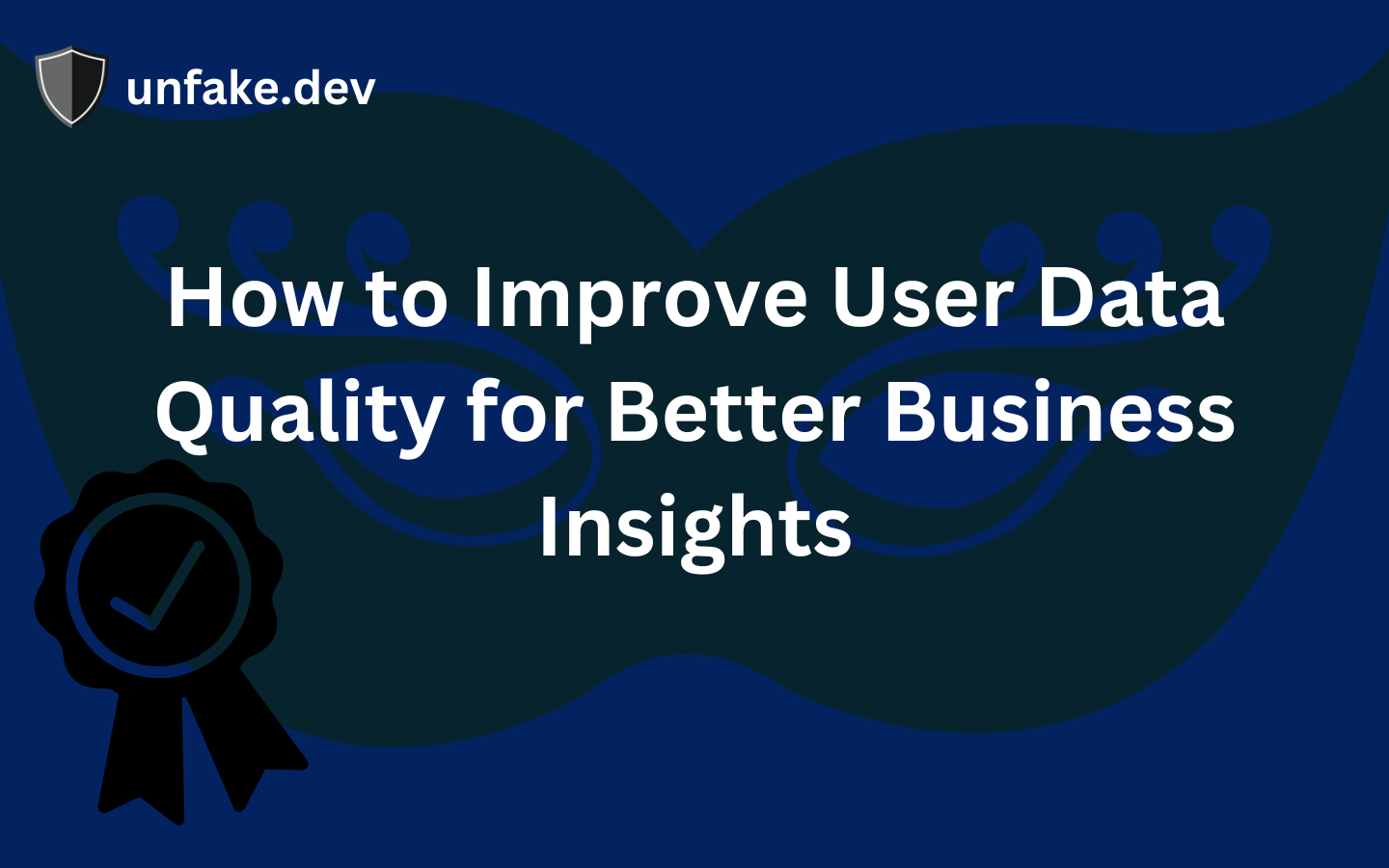How to Improve User Data Quality for Better Business Insights
In today’s data-driven world, high-quality data is essential for understanding your customers, creating impactful strategies, and staying ahead of the competition.

In today’s data-driven world, businesses thrive on insights derived from user data. However, if your user data is riddled with inaccuracies, duplicates, or outdated information, it can lead to misguided decisions and missed opportunities. High-quality data is essential for understanding your customers, creating impactful strategies, and staying ahead of the competition.
So, how can you ensure the quality of your user data? Here are some practical tips to help you get started:
1. Start with Strong Data Collection Practices
The quality of your data depends largely on how it’s collected. Implement measures to capture accurate and relevant user information right from the start. Here’s how:
- Use validation checks for fields like email addresses, phone numbers, and postal codes.
- Keep forms short and simple to encourage users to provide accurate information.
- Avoid free-text fields where possible, as structured data is easier to validate and manage.
- Clearly explain why you’re collecting specific data to build trust and encourage honesty.
2. Validate Data Regularly
Even with the best practices in place, some incorrect or fake data may slip through. Regular validation ensures that your database stays clean and reliable. For example:
- Use email verification tools to confirm that email addresses are valid and active.
- Cross-check user inputs like phone numbers and postal codes with authoritative sources.
- Employ AI-powered tools to identify anomalies or inconsistencies in user data.
3. Remove Duplicate and Outdated Entries
Duplicates and outdated records can lead to inflated user counts and misleading insights. Implement systems to identify and merge duplicate entries while preserving the most accurate information. Additionally:
- Set up automated processes to flag duplicate accounts.
- Periodically review your database to remove or update old, inactive user profiles.
- Use deduplication tools to streamline this process and maintain a clean dataset.
4. Standardize Your Data
Standardized data is easier to analyze and compare. When collecting and storing user information, follow consistent formats:
- Use standardized naming conventions (e.g., “John Smith” instead of “J. Smith”).
- Format dates uniformly (e.g., YYYY-MM-DD).
- Ensure consistent capitalization, abbreviations, and field labels.
Standardization makes it easier to integrate data from multiple sources and eliminates confusion caused by inconsistencies.
5. Regularly Engage with Users
User data quality improves when users have opportunities to update their information. Actively engage with your audience to keep your records accurate:
- Send periodic emails asking users to review and update their profiles.
- Offer incentives like discounts or exclusive content in exchange for updated information.
- Make it easy for users to edit their data directly within your platform.
6. Secure Your Data
Data security and quality go hand in hand. When users trust that their data is safe, they are more likely to provide accurate information. Ensure:
- Robust encryption protocols to protect sensitive data.
- Compliance with data protection laws like GDPR or CCPA.
- Regular security audits to identify vulnerabilities.
7. Invest in Data Quality Tools
A variety of tools and platforms can automate data cleansing, validation, and enrichment processes. These tools can:
- Identify and remove invalid entries.
- Enrich existing data with missing details (e.g., adding geographical information to an address).
- Provide real-time data quality monitoring.
Some popular options include data verification APIs, CRM software with built-in data management features, and data cleaning platforms.
8. Measure and Monitor Data Quality
To improve, you need to measure. Define metrics that align with your business needs and track them regularly. Key metrics might include:
- Completeness: Are all required fields populated?
- Accuracy: How often is the data verified and corrected?
- Timeliness: Is the data up-to-date?
- Consistency: Is the data consistent across different systems and sources?
Regularly review these metrics to identify areas for improvement and ensure your data remains a valuable asset.
Conclusion
High-quality user data is the foundation of meaningful business insights. By implementing the practices outlined above, you can build a database that is accurate, reliable, and actionable. It’s not just about collecting data—it’s about collecting the right data and ensuring it stays that way.
When you prioritize data quality, you empower your business to make informed decisions, improve customer experiences, and achieve greater success. Start improving your data today—the results will speak for themselves!




